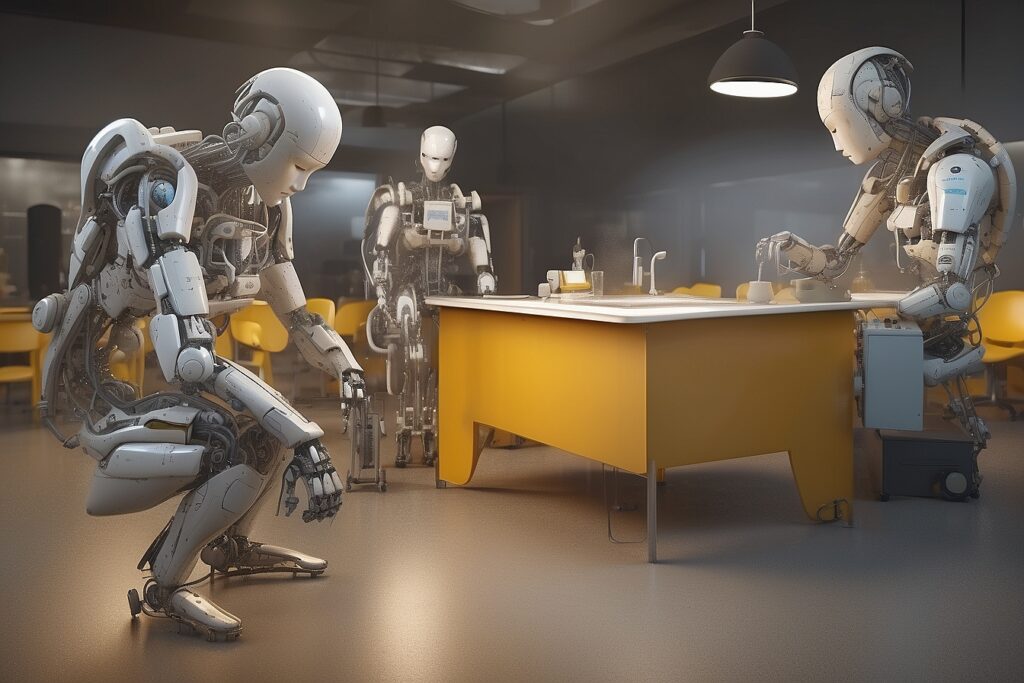
Dassault Systèmes Industry Experts Assert the Irreplaceable Role of Human Creativity
The intersection of artificial intelligence (AI) and manufacturing stands as a pivotal driver of economic growth and technological progress, particularly within the framework of Industry 4.0. Projections from PwC suggest a significant uptick in the manufacturing sector’s contribution to gross domestic product (GDP) by more than 10% by the year 2030, with China positioned as a frontrunner expected to gain $2.5 trillion in GDP due to its robust manufacturing landscape and substantial investments in AI.
In an interview with Manufacturing Asia, Shrikanth Savant, Director of Data Analysis and Science at Dassault Systèmes, emphasized the importance of comprehending the intricate dynamics between AI and manufacturing within the context of Industry 4.0, a period characterized by the digital transformation of manufacturing processes.
PwC’s forward-looking analysis underscores China’s leading role in this transformation, with the manufacturing sector forecasted to drive significant economic growth by 2030, fueled by the country’s strong manufacturing base and considerable AI investments.
“We develop tools to enhance manufacturing design. Our aim isn’t to entirely replace human effort but to alleviate the complexity of the design process,” Savant remarked. “By integrating AI to further streamline this process, we aim to reduce tedious tasks and enhance efficiency.”
Expanding on the impact of AI on manufacturing, the concept of generative design emerges as a frontier of innovation.
While still in its infancy, generative design marries user input with AI capabilities, empowering users to achieve design objectives with unprecedented speed and precision.
Savant also underscored the supportive role of AI within 3D software platforms, portraying it as an assistant that aids in design tasks without overshadowing user control, thereby streamlining the intricate design process.
Integral to this integration is the responsible handling of data. Dassault Systèmes places a high priority on developing AI models trained on proprietary data.
This approach ensures that the AI models are tailored to meet the specific needs of users while also upholding privacy and safeguarding intellectual property rights.
The Fourth Industrial Revolution
Jasmeet Singh, Executive Vice President, Global Head of Manufacturing and Chair of Infosys Public Services and Infosys Automotive GmbH, emphasized in his article for the World Economic Forum (WEF) the undeniable synergy between AI technologies and manufacturing. He noted that the manufacturing industry has become a significant adopter of AI in recent decades.
Manufacturers are increasingly leveraging collaborative robots (‘cobots’) alongside human workers to enhance productivity and safety. AI technologies empower cobots to undertake various tasks such as quality inspections and packaging.
Through machine learning and Big Data analytics, autonomous planning for supply chains is achieved, optimizing throughput and meeting production deadlines.
AI-driven monitoring of machinery enables the prediction and prevention of breakdowns, leading to improved productivity. Automated testing and quality control processes identify defects, while generative AI expedites product innovation.
Despite challenges such as operational discrepancies and data-related issues, addressing these barriers can unlock AI’s transformative potential in manufacturing. This will not only enhance efficiency but also yield significant benefits for the industry as a whole.
Hype versus Reality: Navigating AI in CAD Technologies
In a media forum during the 25th 3DEXPERIENCE World event in Dallas, Gian Paolo Bassi, Senior Vice President of 3DEXPERIENCE Works and Customer Role Experience at Dassault Systèmes, alongside Manish Kumar, CEO of SOLIDWORKS, provided insights into the nuanced understanding required to differentiate between the hype surrounding AI and the tangible advancements in CAD (Computer-Aided Design) technologies.
Kumar emphasized the misconception that AI is synonymous with generative AI, particularly due to the prevalence of large language models like ChatGPT.
He clarified that whilst generative AI attracts significant attention, it represents only a portion of the broader AI landscape. Kumar cited historical applications of AI in tasks such as text recognition for postal services and underscored the diverse functionalities encompassed within the AI spectrum.
Furthermore, Kumar and his colleagues highlighted that the integration of AI into CAD software predates the current hype cycle. SOLIDWORKS, for instance, has been incorporating AI features for 25 years, including predictive commands and sketch auto-selection capabilities.
However, it was the recent surge in interest surrounding AI—partially fueled by advancements in generative AI—that propelled these capabilities into the forefront of industry discourse.
Addressing concerns about AI replacing human creativity, the consensus was that while AI excels at data processing and pattern recognition, it cannot replicate the unique imaginative capacity of humans.
During the discussion, the potential societal implications of over-reliance on AI and intellectual property (IP) infringement were also explored.
“We view AI not as providing users with the final solution but as offering multiple different ideas to meet their specific needs. As users evolve these ideas, they become copyright-protected or patentable,” Kumar explained.
Regarding the philosophical aspect of AI’s potential dangers and its containment, Bassi reassured that technology’s impact ultimately depends on how it is utilized.
He emphasized that even if AI poses risks, measures can be taken to mitigate them, reinforcing the importance of responsible technological usage.
Unlocking the Potential of SOLIDWORKS
SOLIDWORKS, catering to small and medium-sized businesses, is at the forefront of democratizing access to advanced design tools. According to Savant, makers and hobbyists represent a growing market segment empowered by the affordability and comprehensive solutions provided by SOLIDWORKS.
This inclusive approach ensures that users not only benefit from AI-driven efficiencies but also retain control over design parameters, facilitating seamless integration into real-world manufacturing processes. “Our focus has always been to use AI in generative parametric CAD models, allowing users to make modifications and scale designs as needed,” Savant explained.
While AI has streamlined the conversion of images into 3D models, a persistent challenge lies in ensuring that resultant meshes are manipulable and dimensional.
This underscores SOLIDWORKS’ commitment to empowering users with editable, manufacturable designs, ensuring practical utility in everyday manufacturing endeavors.
“We aim to provide real value to users that can be applied in their day-to-day manufacturing operations,” Savant emphasized.
Looking ahead, Savant recognizes AI-driven advancements’ potential to revolutionize the design landscape. Despite regional disparities and cultural factors influencing adoption rates, Dassault Systèmes remains vigilant and committed to proactively addressing emerging challenges.
However, PwC warns against hastily embracing AI without thorough consideration. According to a PwC report titled “An Introduction to Implementing AI in Manufacturing,” AI presents both disruption and opportunities for gaining a competitive edge. Firms that overlook the importance of AI risk losing their competitive edge.
The consulting firm suggests six building blocks for successful AI integration into manufacturing: business application, data, technology, talent and organization, process, and culture. This strategic approach ensures a smooth transition to AI-driven manufacturing, enhancing efficiency and competitiveness in the industry.



